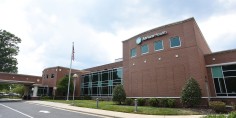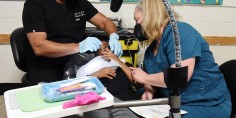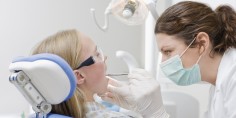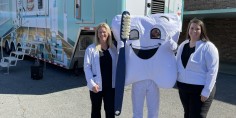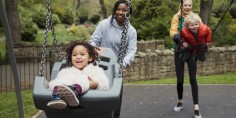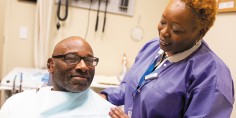Hospitals across the Carolinas have been challenged as never before. The COVID-19 pandemic has strained their resources, upended their budgets and stressed out their doctors, nurses and support staff. The challenges are experienced across the board, but can be acutely felt at rural hospitals. To get a view from the front lines of the medical fight against COVID-19, we spoke with Michelle Fortune, Chief Executive Officer of St. Luke’s Hospital in Columbus, North Carolina.
Q. Tell us about St. Luke’s.
A. We have 25 beds and a staff of 275 to 300. We are 100 percent locally and independently owned. We know that makes us a little bit of a unicorn.
Q. Are you owned by the county?
A. No, we are not county-owned. St. Luke’s Healthcare Inc. and St. Luke’s Hospital Inc. are both 501(c)(3) non-for-profit organizations owned by the local citizens. We have a volunteer Board of Trustees comprised of citizens elected from the community. They serve terms and govern the hospital. When I tell people here, “This is your hospital,” it really is. We celebrated our 90th birthday in November 2019.
Q. What are some of the services you offer?
A. We have three operating rooms and do a good deal of elective surgery — mostly orthopedics, urology and cancer care. We offer a rural health clinic. Dr. Jeff Viar is the lead physician there and was recently awarded the 2020 National Rural Health Association Practitioner of the Year Award — first time this honor has ever been awarded to anyone in North Carolina, so we’re extremely proud of that.
Q. Tell us about the area your hospital serves.
A. Polk County is a rural area in the foothills of western North Carolina with a population of 20,500. When I joined the hospital in March 2019, I moved from a metropolitan area in Charlotte. I wanted to be closer to my home, which is an hour from St. Luke’s. Moving to Columbus, N.C., was like coming back home to a small community like the one I grew up in. St. Luke’s Hospital is very much a safety net for our predominantly retirement-aged community. Many residents are reluctant to drive 35 – 40 minutes to access health care services, so we can offer them a variety of services and specialty practices locally, close to home.
Q. How has the pandemic changed life at St. Luke’s? Have you seen COVID-19 patients?
A. We have cared for both inpatient and outpatient individuals who have experienced COVID-19. We are 70 to 75 percent Medicare/Medicaid as a general rule in our care mix, so we serve a high-risk elderly population already. When we couldn’t fill elective procedures appropriately because of COVID-19, it had a huge financial impact on us because all of those revenues suddenly stopped. We lost millions of dollars in just a couple months. For example, in the month of April alone, we lost $1.8 million. When I first arrived here in 2019, St. Luke’s had had several years of very poor financial performance, where there were significantly large losses. We worked through some cost-saving initiatives and had finally reached a positive operating margin for four consecutive months. Then, COVID arrived and knocked us off a cliff.

